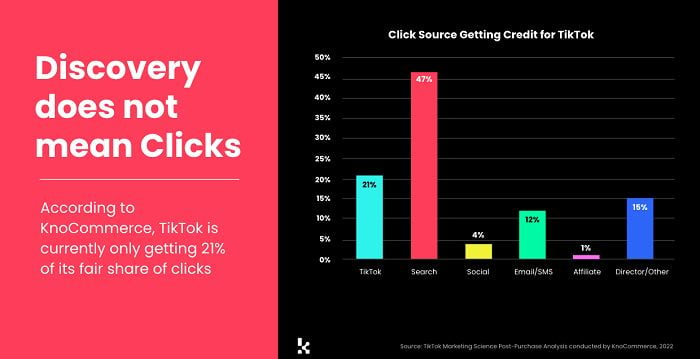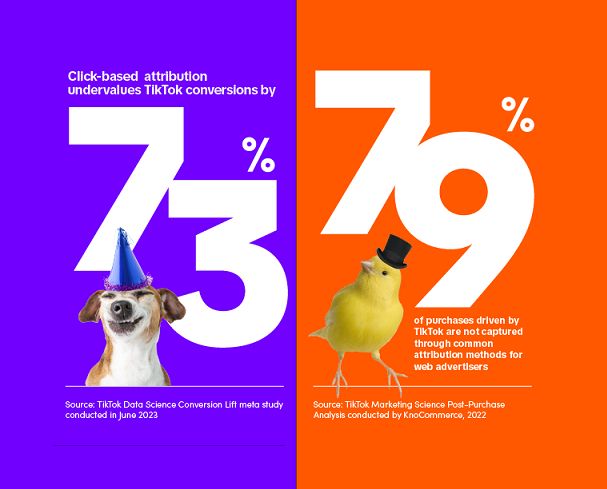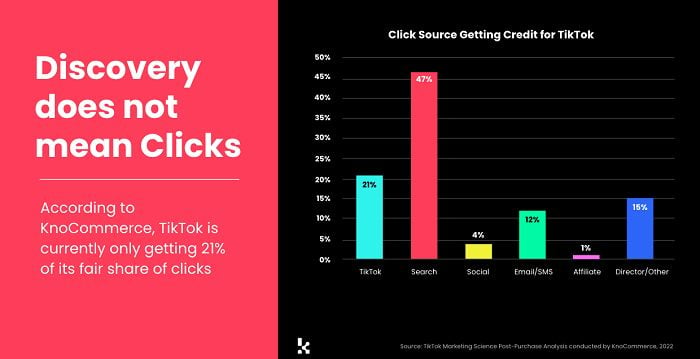While TikTok has become a key discovery platform, even rivaling Google for product discovery among some audience groups, current ad measurement solutions don’t always account for its influence, because of how people use the app.
In fact, TikTok says that last-click attribution models significantly underreport the role that it plays in the process, because TikTok users tend to be immersed in the in-stream viewing experience, making them less likely to directly click.
They still go searching for the brands that they’re exposed to (and interested in) during their app session, but they tend to do so later, and according to at least one analysis, TikTok’s influence in this respect is much bigger than you might think.

In order to provide more in-depth insights into the role that TikTok actually plays in product discovery, the TikTok team recently partnered with external researchers to dig into its insights. It found that last-click attribution undervalues TikTok conversions by a whopping 73%, while 79% of purchases that are driven by TikTok are not captured through common attribution methods.

So how do you mitigate this?
TikTok says that switching on both view-through and click-through attribution for your TikTok campaigns will provide more accurate insight, while also helping your ads move through the learning phase quicker.
“To capture the holistic value driven by TikTok, we recommend leveraging both click-through and view-through attribution windows. TikTok offers 1-day, 7-day, 14-day and 28-day click-through attribution windows, and 1-day, 7-day, and no view-through attribution (VTA off) options.”
TikTok also suggests that advertisers use longer attribution windows, in order to capture more events in campaign reporting (note: TikTok recently added a new Performance Comparison element to provide real world overviews of using different attribution measurements), while it also advises that advertisers should resist making ad changes before sufficient measurement time has passed.
“Consider your attribution window when evaluating the success of an ad you are running. For example, if you have a 28-day click window, you may see that your performance improves with time as we capture more attributed events. Making changes to your campaign too often leads to performance fluctuations.”
TikTok also notes that many advertisers will need to try a variety of approaches before finding the right fit for them. Options like conversion lift and media mix modeling provide different levels of data insight, which could help to inform your strategy.
Essentially, TikTok’s saying that, based on the way people use the app, using traditional ad measurement modeling won’t be effective, and you’ll need to expand your tracking methods if you really want to understand how your TikTok campaigns are driving audience response.
Which is convenient for TikTok, as it lessens the performance pressure on its ad products, while also guiding brands to more expensive tracking tools. But the point is that you can’t necessarily rely on last-click attribution anymore, especially when measuring the effect of your TikTok campaigns.
Worth considering. You can read TikTok’s full attribution rundown here.



